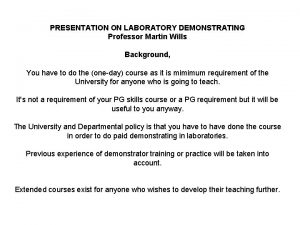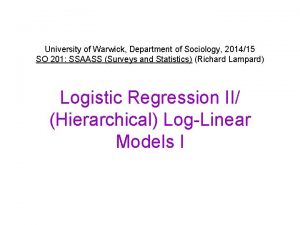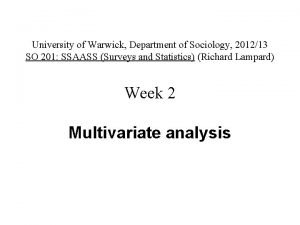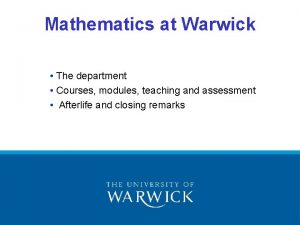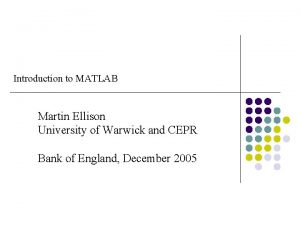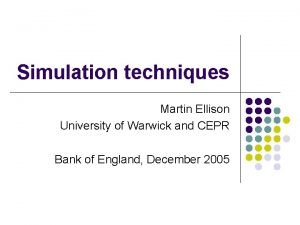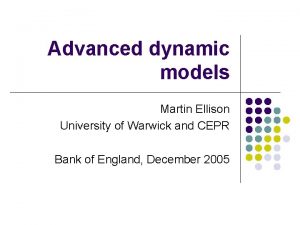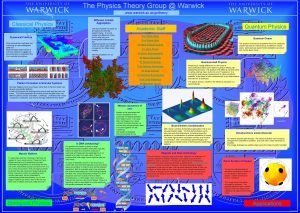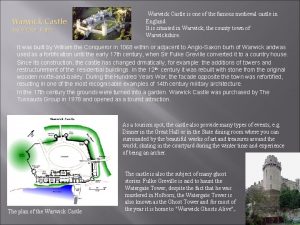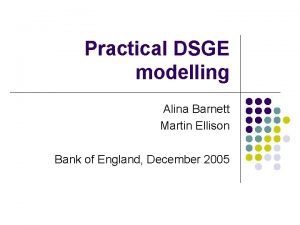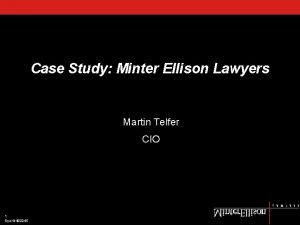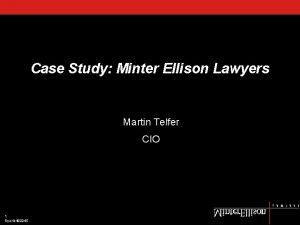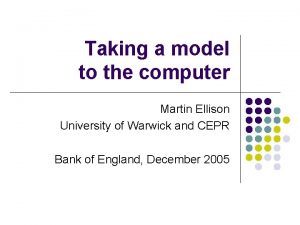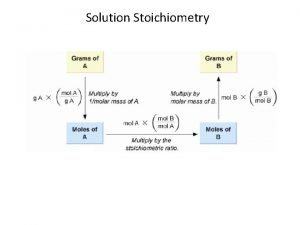Solution techniques Martin Ellison University of Warwick and






















- Slides: 22

Solution techniques Martin Ellison University of Warwick and CEPR Bank of England, December 2005

State-space form Generalised state-space form Many techniques available to solve this class of models We use industry standard: Blanchard-Kahn

Alternative state-space form

Partitioning of model backward-looking variables predetermined variables forward-looking variables control variables

Jordan decomposition of A eigenvectors diagonal matrix of eigenvalues

Blanchard-Kahn condition The solution of the rational expectations model is unique if the number of unstable eigenvectors of the system is exactly equal to the number of forward-looking (control) variables. i. e. , number of eigenvalues in Λ greater than 1 in magnitude must be equal to number of forward-looking variables

Too many stable roots multiple solutions equilibrium path not unique need alternative techniques

Too many unstable roots no solution all paths are explosive transversality conditions violated

Blanchard-Kahn satisfied one solution equilibrium path unique is system has saddle path stability

Rearrangement of Jordan form

Partition of model stable unstable

Transformed problem

Decoupled equations stable unstable Decoupled equations can be solved separately

Solution strategy Solve unstable transformed equation Solve stable transformed equation Translate back into original problem

Solution of unstable equation Solve unstable equation forward to time t+j As , only stable solution is Forward-looking (control) variables are function of backward-looking (predetermined) variables

Solution of stable equation Solve stable equation forward to time t+j As , no problems with instability

Solution of stable equation Future backward-looking (predetermined) variables are function of current backwardlooking (predetermined) variables

Full solution All variables are function of backward-looking (predetermined) variables: recursive structure

Baseline DSGE model State space form To make model more interesting, assume policy shocks vt follow an AR(1) process

New state-space form One backward-looking variable Two forward-looking variables

Blanchard-Khan conditions Require one stable root and two unstable roots Partition model according to

Next steps Exercise to check Blanchard-Kahn conditions numerically in MATLAB Numerical solution of model Simulation techniques
 Martin wills warwick
Martin wills warwick Martin wills warwick
Martin wills warwick Warwick university sociology
Warwick university sociology The invisible man chapter 1
The invisible man chapter 1 Ellison g gray
Ellison g gray Vapour pressure composition curve for non ideal solution
Vapour pressure composition curve for non ideal solution Fonction technique scooter
Fonction technique scooter Warwick sociology modules
Warwick sociology modules 01926 600036
01926 600036 Elevator wheel and axle
Elevator wheel and axle The warwick model
The warwick model Leicester warwick medical school
Leicester warwick medical school Leicester warwick medical school
Leicester warwick medical school Warwick astro
Warwick astro Microsoft stream warwick
Microsoft stream warwick Business coach warwick
Business coach warwick Susan carruthers warwick
Susan carruthers warwick Warwick rudd
Warwick rudd Warwick bartlett
Warwick bartlett Warwick maths modules
Warwick maths modules Warwick bartlett
Warwick bartlett Necrosis
Necrosis Warwick matlab
Warwick matlab

